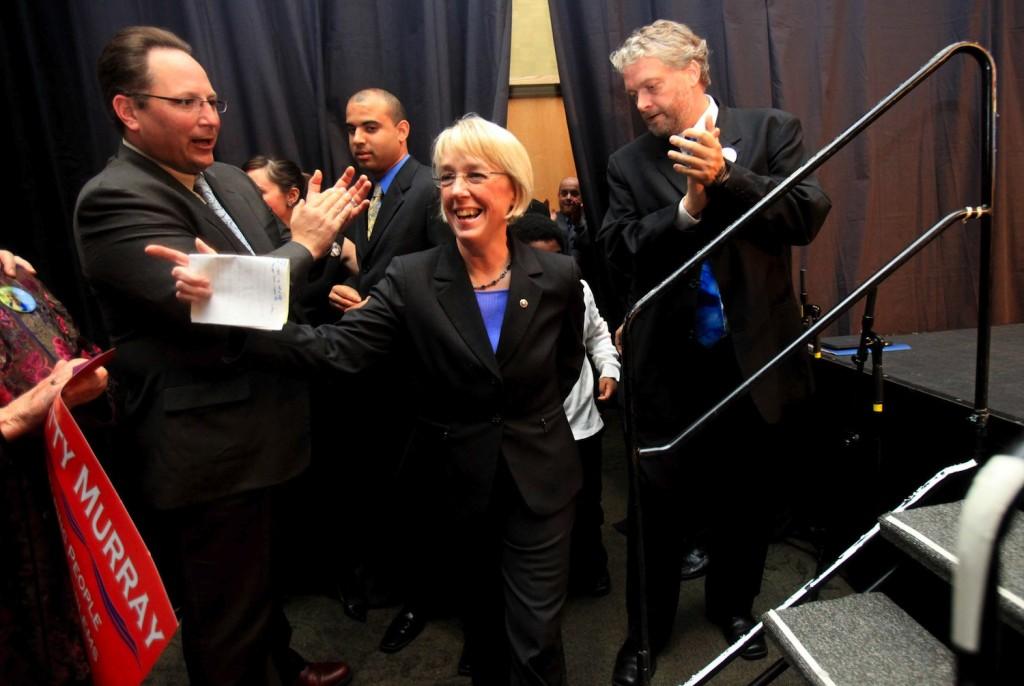Female Politicians: The Underrepresented Majority
November 16, 2011

With only 17 women involved with the U.S. Senate, an assembly of 100, I feel severely underrepresented in government, and I have a feeling that it’s only going to get worse. But the real issue is whether or not the problem is the result of the female politician’s lack of interest or the male politician’s subtle discrimination.
According to Jennifer Steinhauer’s article, “More Women in Senate, But Seats Are at Risk,” from The New York Times, there are more women in the Senate since women first began their involvement in the 1920s. It began with an accident in 1922 when Rebecca L. Felton held a seat for “a mere 24 hours to replace a dead member.” From then on, the place of women in the Senate has been spotty until 1992 when the number increased to four and since then has continued to grow.
This may seem like progress, especially when Steinhauer’s piece is accompanied by a nifty bar graph which visually demonstrates the “explosion” of recent female involvement in the Senate. However, when you consider the 2010 government census, in which women were the majority by five million people, you realize the number of women that we have in office is not nearly enough to properly represent the women in this country.
And if this wasn’t enough, Steinhauer tells us that it’s going to get worse. Of all the female senators up for reelection, only one of them is a Republican. So if the upcoming election doesn’t go well for the Democrats, many female senators will be looking for another job. It sends a chill down my spine when I think about how difficult it will be for female representation to recover from a blow like that. Plus, even with the remaining female senators left in the aftermath, women will still be severely underrepresented in the Senate.
Now maybe the problem here is that women aren’t stepping up to the plate. After all, in order to get into office, you have to run. But many women are desperate to get other women interested in politics. Senator Patty Murray spends a large amount of her time trying to recruit women to run, and foundations such as the Barbara Lee Family Foundation make recruiting women into politics one of their main goals.
The reason that Steinhauer thinks women are reluctant to join the political race is that, unlike their male counterparts, they aren’t so much interested in politics but rather in individual policy, making it harder to convince them to run. I haven’t done too much research into the motivations of female politicians, but this sounds like a weak argument. I think male discrimination is what makes women reluctant to get involved in politics.
Historically, more than a few men don’t have a great track record on reining in their chauvinism. The Supreme Court case Bradwell v. State of Illinois (1872), sums up this overall fear of women nicely. In this case, a woman wanted the right to practice law in the state of Illinois. The court firmly rejected her, one of their reasons being that it could “open the floodgates” and every woman would want to be a lawyer and they might even become governors and sheriffs. Apparently, this possibility horrified the court.
However, this chauvinistic attitude, evident in the 19th century, continued to thrive well into the following centuries. Justice Brennan worded it nicely in the 1973 case of Frontiero v. Richardson in which a female member of the armed forces fought for the same marriage benefits as her male comrades. Justice Brennan wrote, “Our nation has had a long and unfortunate history of sex discrimination” and “this…attitude became…firmly rooted in our national consciousness.” The female members of society have continued the fight against male chauvinism, and it seems that the fight is against the intangible national consciousness, a daunting thought.
And it looks like this subtle discrimination has been lingering even today. Steinhauer writes that “until just a few months ago, there wasn’t even a women’s restroom near the House floor.” This is a couple of months, not a couple of years. It may sound weird to judge the welcoming committee based on the bathrooms, but it’s actually an important thing. If you expect people to stay for more than a few hours, you’re going to need a place to go to the bathroom.
So whose fault is it really? It’s hard to say. I’d like to blame something vague, like society, but I think we’re all to blame in some way, even if I think male chauvinism plays a larger role than the reluctance of women. I only hope that if women do lose their seats in the Senate, it will cause a big enough stir so that more women realize the severity of this problem and rise to the challenge.










Crystal Lewis • Nov 18, 2011 at 6:17 pm
I think you’re right about chauvinism penetrating so deeply into our national conscious that it just seems natural, but there’s also the fact that as Gloria Steinem says, “we can’t be what we can’t see.” If most young women only see men in positions of power, then it’s no wonder they don’t strive to be politicians. The reason the glass ceiling is hard to break is because it’s invisible. There’s also the fact that the media’s treatment of female politicians is horrible, because they are typically judged more for their looks than their policies or intelligence (Sarah Palin being a prime example).